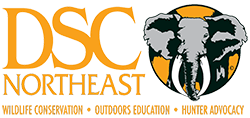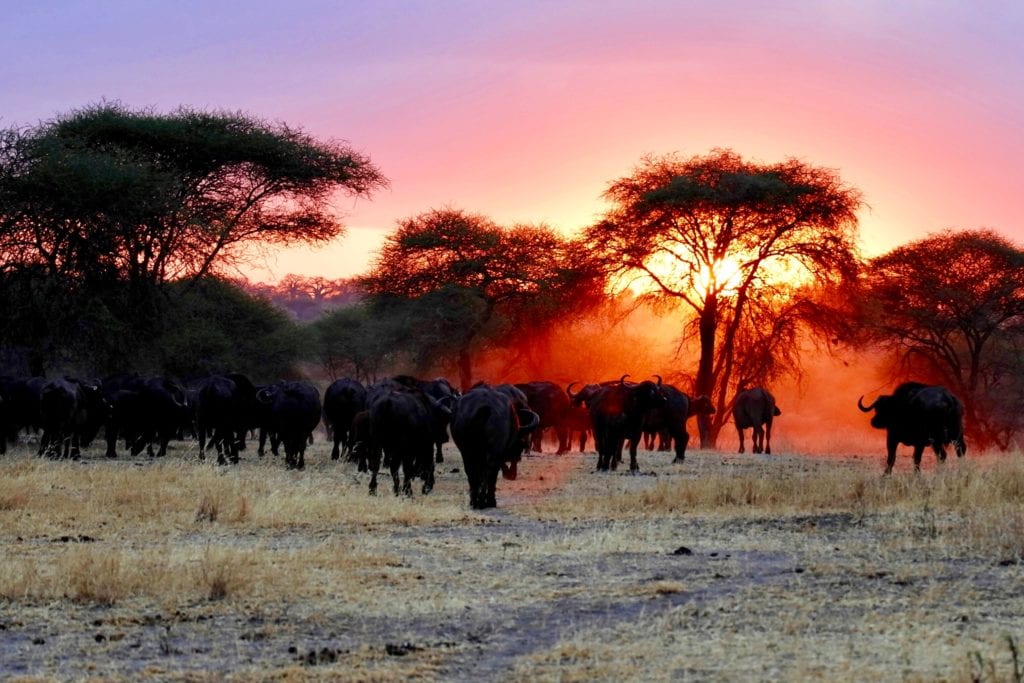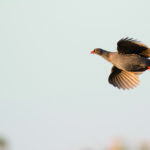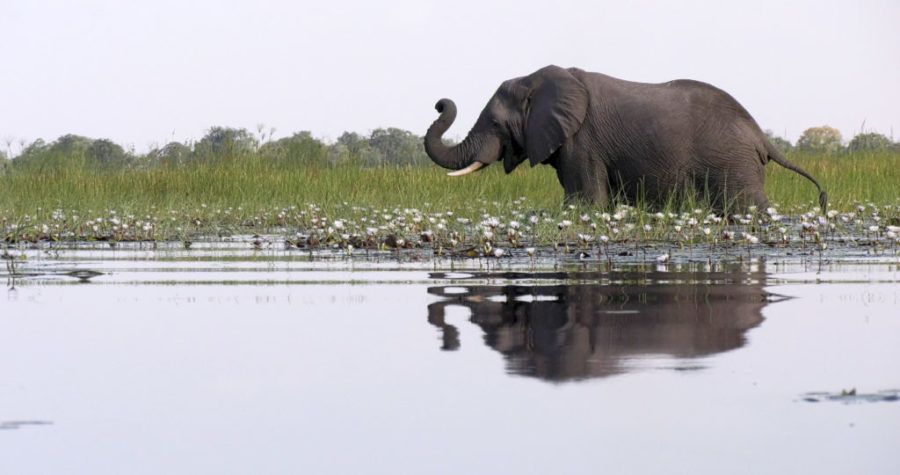
Q: Tell us about your family, how they originally got to Africa.
A: My great-great grandfather came to South Africa around 1850. He was a doctor, and he married an Afrikaans Boer woman. My great-grandfather also married an Afrikaans Boer woman and they fought against the English during the Boer war. Their family farm was destroyed in the scorched earth policy at the time, and the family spent some time in one of the concentration camps. After the Boer war they emigrated to Rhodesia, now Zimbabwe, and worked for a company that was in the beef business. My grandfather was born in Bulawayo in 1912, and was educated in Rhodesia. He met my grandmother who had emigrated to Rhodesia from Scotland as a radiographer. My grandfather was a carpenter by trade which held him in good stead in later years when he started his own farming venture. He joined the Rhodesian Royal Air Force for the duration of the Second World War. On returning to Rhodesia he bought a farm at Balla Balla, approximately 70km south of Bulawayo on the Beit Bridge road, and did beef cattle and limited cropping under irrigation.
My father was one of four children – three boys and one girl. He was a twin, the youngest. He had a great upbringing on the farm where the hunting of plains game and game bird was freely available. On leaving school in 1965 he joined the Department of National Parks and Wild Life Management as a Cadet Ranger, and was fortunate enough to be transferred to Mabalahuta in the Gona-re-zhou National Park where he worked under Richard Harland who was an experienced elephant hunter.
Richard taught him the basics of elephant hunting. Added to this the Sergeant Game Scout was a man named Machavana who himself was very experienced with elephants. My father worked for the Department of National Parks and Wild life for nine years and gained a tremendous amount of experience in all aspects of big-game hunting, namely elephant, buffalo, lion, and leopard. There was a tremendous amount of control work to be done in those days.
Today this is not the case, as safari hunting has placed a big value on all these animals which are now hunted by safari operators with their perspective clients. So whereas in the past a farmer would destroy a lion that was eating his cattle, these days the farmer would sell the lion to a safari operator. While stationed at the Main Camp of Hwange National Park he met and married my mother, Bertie, who had come to visit her aunt in Bulawayo. Bertie came from Holland, but as a child, till she was 16 years old, lived in Indonesia and New Guinea where her father was an administrator for the then Dutch Colony. This I am sure prepared her for the bush life that they have lived since then.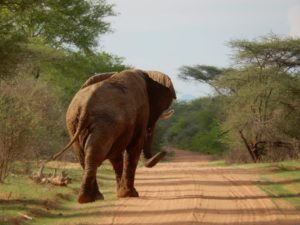
Q: When and where were you born?
A: I was born in Bulawayo in 1975.
Q: How did you get into hunting – what was it that influenced you?
A: It was growing up on the farm in Mbalabala, and on the various hunting camps where my parents operated, and just generally having a passion for wildlife and wide-open spaces influenced my career decision.
Q: With whom did you train, apprentice and learn from?
A: I mainly learnt from my father Barrie Duckworth and company PHs Pete Fick and Hilton Nichols.
Q: What was the most important thing you learned during those early years?
A: Hard work ethic, honesty and that your word is your word. Obviously growing up hunting I learnt a lot about the bush and wildlife long before I started my apprenticeship.
Q: The early years of professional hunting – where were they?
A: I did pretty much all of my apprenticeship in Chewore South in the Zambezi Valley, Matetsi River Ranch near Victoria Falls, and the Save Valley Conservancy in the South Eastern Lowveld of Zimbabwe.
Q: What was next?
A: On leaving National Parks in 1974 we decided to go farming on our home farm at Balla Balla. Our internal war was on and I felt that my aging parents needed support on the farm. However, I soon was missing big-game hunting, and when my former boss in National Parks who had also left the Department and had now started his own Safari company, phoned me and asked if I would do some pro-hunting for him, I jumped at the opportunity. Due to several factors I eventually left A B&M safaris and went on my own in 1978. We called ourselves Hunters Safaris. I was then joined by Roger Whittall and we formed our own safari company in 1982 which we called Zinyela Hunters Safaris (Pvt) Ltd. In 1998 we dissolved Zinyela Hunters Safaris and each formed our respective companies. Roger’s became Roger Whittall Safaris and mine became Mokore Safaris. These are the companies by which we still operate today. Obviously, growing up on the family farm and on all the hunting camps where my parents operated, my brother Neil and I grew up loving wildlife, hunting and the bush. We both went straight into the business as soon as I finished University and Neil finished Blackfordby Agricultural College.
Q: What were some of the more embarrassing, fun and interesting experiences?
A: My first few hunts as a qualified PH where I had to lead the charge had plenty “learning” experiences. The poor clients ended up getting walked a lot harder to try and get an animal as my inexperience (even after a three-year apprenticeship under some of the best PHs out there) lead to me passing up an animal or not getting the client in the right position, etc. It was sometimes embarrassing but always fun for the most part. There were a few difficult sections with clients where my inexperience allowed them to “bully” me, but I soon learnt how to deal with all these things, making safari even more fun, not only for our guests but also for myself.
Q: Any specific client experiences that stood out?
A: My first leopard hunt was in the save valley conservancy. I had set up a bait on the banks of a small stream on our Angus ranch. Tracks told us (before the advent of trail cameras) that we had a tom and female hit. In the blind early because of overcast weather and at 4:30 p.m. we saw movement by the bait. Soon we had two leopard cavorting and playing around in the river sand, one male and a female. You would have thought that being in daylight I would have seen that although the male was bigger than the female it was not an old cat. I am not sure if it was because I was shaking so much that could hardly hold my binos, or was just too excited to have a male in front of us that I instructed the client to take him. All that remains to be said is that the cat was not of the required age. Valuable lesson learnt!
Q: Any other valuable lesson?
A: The second valuable lesson I learnt was when i was conducting anti-poaching patrols on the same ranch.
A large job in the early years consisted of ridding these areas of huge numbers of snares that were remaining from the cattle days, as well as fighting the ever-present new poaching gangs. As an apprentice working on the property, I spent many hours patrolling with the game scouts. Due to the very low numbers of dangerous game back then, we normally just patrolled with shotguns loaded with either birdshot or buckshot…for shooting dogs and as an intimidation factor when confronting poachers.
On the day in question I was patrolling along the Chinchindwe River on our newly acquired Angus Ranch. We had been patrolling for maybe an hour, when we came across a snareline of about 30 wire snares along the edge of a mopane forest and an open area. We spread out searching for other snares and removing the ones we found. Whilst untying a snare, I heard a sound in a small Ilala palm thicket behind me in the middle of the open area. I asked the scout nearest to me if he had heard anything. He hadn’t, and so we just carried on removing snares. I heard the sound again and alerted the scout to this fact.
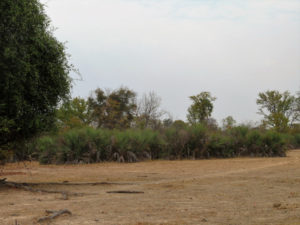 He was immediately convinced that it was the owners of the snares hiding in the thicket, and wanted to rush in and arrest them as the first guy to lay a hand on a poacher arrested got the biggest bonus! I cautioned him to hold back a bit as there were tracks of a buffalo herd that had passed near the snareline, and that this could be a snared buffalo. Taking the bird shot out of the Benelli shotgun I was carrying, I replaced it with slug, buckshot, slug, buckshot in that combination.
He was immediately convinced that it was the owners of the snares hiding in the thicket, and wanted to rush in and arrest them as the first guy to lay a hand on a poacher arrested got the biggest bonus! I cautioned him to hold back a bit as there were tracks of a buffalo herd that had passed near the snareline, and that this could be a snared buffalo. Taking the bird shot out of the Benelli shotgun I was carrying, I replaced it with slug, buckshot, slug, buckshot in that combination.
Once done and now better armed, I suggested that we proceed into the thicket and see if it was indeed the poachers. The ever-eager scout forged ahead with the snares he had removed over his right shoulder. We hadn’t gone but a few meters into the thicket when he hurriedly started trying to back out past me, but the snares on his shoulder were catching on the palm thorns. Trying to step to the side to see past him, I questioned him, “Chi, chi?” (“What, what?”). By then he was free from the thorns and made himself scarce. I then saw what was troubling him coming at me at full pace: An angry buffalo bull!
My first shot with a Rottweill slug at about eight paces, hit it in the right eye but had absolutely no effect on the bull! By the time I could pull the trigger a second time he had already dropped his head to toss me, so I shot him into the top of his skull with a charge of buckshot. Fortunately, this killed him outright and I was able to jump aside allowing his body to fall past me. I quickly put two 9mm bullets into the back of his head with the handgun I had as insurance, but these were unnecessary as the shotgun had killed him. 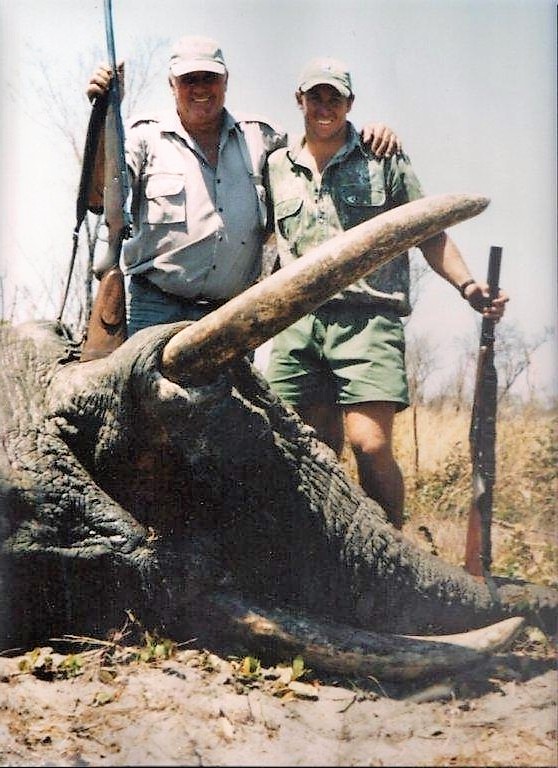
My biggest concern then was to try and explain to my father how I had killed one of his precious buffalo that the Conservancy was trying to breed up. Of course, when I got him on the radio his only concern was our safety. I was extremely lucky that this was a soft-bossed bull, as I think if he had had a hard boss the buckshot would not have penetrated and I probably wouldn’t be here writing this story. In hindsight, I appreciate the follies of youth. I would NEVER go into such a situation again now if I had only a shotgun with me. The Lord sometimes protects the dumb!
That being said, thus far in my career, the two closest incidents with trouble from dangerous game I have managed to sort out using a shotgun. The other was a leopard.
Q: Anything you leant about what not to do?
A: Don’t go into thickets where there are wounded buffalo, only with a shotgun!
Q: Which countries/areas have you hunted since then?
A: I have only hunted Zimbabwe and Mozambique. We started operating in Mozambique in 2001 when the Zimbabwean government embarked on their fast-track land reform policy and started acquiring all our properties. We lost three properties in late 2000/early 2001 and so decided to look in neighboring countries for work.
Q: What were some of the interesting things that happened there?
A: Developing the beautiful areas we have in both Zimbabwe (Mokore and Angus in the save valley conservancy) and Mozambique (coutada 9) have been some of the most interesting and exciting experiences I have had. Save valley was, when my parents first bought these properties, under cattle ranching. Because of this and the terrible drought in 1992, there was minimal game in the area. Taking down all the cattle fences, putting in water holes, and bringing in huge numbers of game was very exciting. As a young apprentice this was a time of hard work but a lot of valuable lessons from some of the best game managers in the world. Working with the likes of Clem Coetzee, my dad Barrie, Roger Whittal, Clive Stockhill and others was a great experience for me.
Q: Tell us more about the Mozambique experience.
A: Our Mozambique concession was wild and huge when we first went in with very few roads and water. Game was severely depleted after 24 years of civil war and the poaching thereafter. Going in and opening up this area was very exciting and form some of my best memories of my entire career. Just taking a pack and walking off into the bush for a week to ten day patrol in an area where you have never been, where you do not know what is over the next hill is very exciting and pushes you on every day to go further in and discover new places. The excitement of getting water from the first boreholes we put in, the first dams built, new roads opened and camps built. Every project is exciting, often difficult but very gratifying. To be able to do this together with my parents, brother, wife and sister-in-law as part of the team has been a blessing.
Q: If you could return to any time or place in Africa, where would it be?
A: Chewore south in the early days. I still love every trip to the save, sengwa and coutada 9. I have been lucky to hunt in great areas. Unfortunately, being so busy close to home has kept me from exploring the rest of Africa so I am sure there are plenty other wild and beautiful places I have missed. I would love to see some of the other countries with big concessions like Zambia, Tanzania, Ethiopia and Uganda. However, I still feel that by having been involved in the resurrection of most of our current areas they are a lot dearer to me.
Q: Which is your favorite trophy animal to hunt? And why?
A: I used to love hunting elephant bulls in big areas when there was a chance to find a big trophy bull. Now this desire has waned as there are very few big wild areas with huge bulls left. Now my favorites are buffalo (especially old dagga boys) and eland. These three are my favorites, as to hunt them is usually physical and a lot of time spent out on tracks. When following in the tracks of these animals they lead you to beautiful springs, pans and also some hellishly horrible thick thorn! Always interesting places though. Also, when on these hunts ones sees and hears all the other aspects and creatures of the bush. This is very different to hunting plains game on smaller areas and mostly spot and stalk from the vehicle.
Q: What is the best trophy animal one of your clients ever took?
A: Probably a 93 lb elephant with John in Ngamo/Sikumi area. There have been many, many great ones though with great memories. Some of them not the biggest measurement wise, but just old and tough.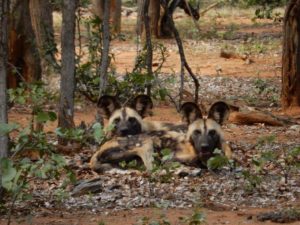
Q: Tell us about two of your most memorable hunts, without naming names.
A: when I was an apprentice we did a mini-cull in the Dande communal area. Culling is never a pleasant job, but as a first-year apprentice this was extremely exciting. The fact that it was very hot and we ran out of water was probably the most lasting memory! I was sent with Magocha (father’s head tracker and hunting legend) to fetch the vehicle, and was hard pressed to keep up even though I was young and very fit. The heat and thirst were tough. Eventually we found a mostly dried-up pan with some small puddles of water in the places where elephant had sunk into the mud. I sucked some through my cap as a filter. Not tasty, but moisture!
On my first lion hunt in Mozambique, there were only a few nomadic lion in the area when we first started there. Now there are plenty, but back then it was extremely challenging to locate and hunt them. I was on a late-season hunt with my very good friend Dan. We had a big male hit our bait, but he was very leery and we couldn’t get him to come in when we were in the blind. All my strategies that I tried, failed. Eventually, we tracked/followed his calls very early in the morning after spending all night waiting by the bait in the blind. He led us to the base of a small kopje and i had a feeling he was up on it. I called, “roared” to him using my cupped hands. We heard a grunt and he appeared about 60 yards away on top of the rise. The early morning sun was shining from behind him and his mane was flared. What a magnificent sight. Unfortunately, the shot was blocked for Dan by a small bush. The lion started trotting down the slope diagonally past us. When he was about 40 yards from us I grunted, and this stopped him. A good shot from Dan and it was over. What a hunt. This lion only had one full paw left. Three had been damaged by poachers gin traps.
Q: Tell us about any disaster of a client and what you had to deal with.
A: one of my worst (thankfully only a couple that I have had to experience) clients was an Englishman hunting with me out of mkanga camp in dande area. He was a whiner, and whined about everything. Just an unpleasant person and impossible to please. Unfortunately, I was young and allowed him to “bully” me. Now it would be different.
Q: What are your recommendations on guns, ammo, or equipment for the first-time hunter to Africa?
A: For a first time hunter for plains game I recommend any of the .300 calibers. Trophy bonded bear claw and swift a-frames are probably my favorite expanding bullets. For buffalo hunters i recommend the .375 h&h. This caliber is fantastic and has stood the test of time, and can be used on anything from an elephant to a grysbok. Accurate out to 250 yards if the need arises, and you can find ammunition almost in any hunting camp. If a client comes with one of these, I recommend a mixture of solids and softs. Usually the first shot a soft and the rest of the magazine solids.
Q: Which guns and ammo are you using to back-up on dangerous or wounded game and tell us why?
A: I started my career using a .458 lott and now use a .505 gibbs. I would use my .458 more than I do currently but have had stock issues. I am confident in any situation with either of these two weapons. Both are accurate and hard-hitting. I only use solid ammunition (usually woodleigh) except for following leopard. I then use a soft point.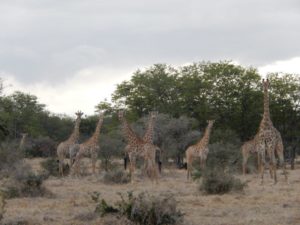
Q: What was your closest brush with death? If more than one – go for it and explain!
A: The buffalo with a shotgun explained above was one. The next closest was a leopard charge that ended up pretty close. I have had numerous close encounters with bad driving and blow-outs on the way to our areas that scare me more than most things!
Q: How has the hunting industry changed in your opinion over the past number of years?
A: It’s way more fast-paced, and many clients now are more interested in their phones than just sitting back and enjoying the bush. One of my pet hates is people looking at their phones when around the camp fire or at the dinner table. Unfortunately, this is the modern way!
Q: If you should suggest one thing to your hunting clients to improve their safari experience, with you, or with anyone else for that matter – what would it be?
A: Prepare, prepare, prepare. Shoot as much as you can and from as many different positions as you can. Get fit, and if you have time try read up on the various animals you may pursue, the country you are going to, and its customs and traditions. Go and relax. Hunt opportunistically and do not stress about the tape measure. Take plenty pictures, keep a daily diary and ask plenty questions.
Q: What can the industry do to contribute to the long-term conservation of Africa’s wildlife?
A: Try and educate the ignorant people overseas who keep trying to shut down hunting. They need to understand that hunters are not the enemy. In fact, they are the ones saving millions of hectares of habitat from being destroyed, and are continually fighting poachers.
Q: What would be your ideal safari if you have one last safari?
A: it would be a multiple buffalo and plains-game safari for 21 days in any of our current areas.
The views expressed by the editors, authors or users of this linked article are expressly theirs, and do not necessarily reflect the policies or opinions of Dallas Safari Club, its employees, members or assigns. Any concerns about a site user’s post should be addressed appropriately to that person. Any concerns about an advertiser, a user or any content on this site should be addressed to social@dscnortheast.org.
